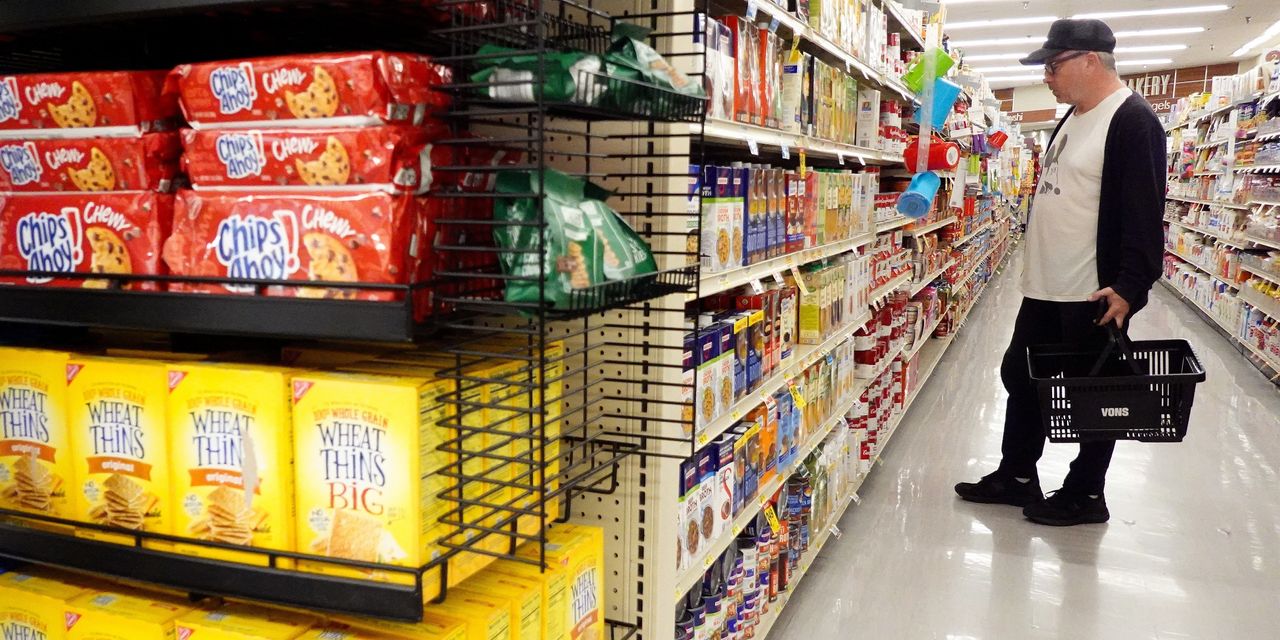U.S. stocks in the consumer staples sector have been getting hammered this year as investors fled dividend-paying shares in favor of higher yields and less risk in the U.S. Treasurys.
The S&P 500 consumer staples sector
XX:SP500.30
has been the second-worst performing sector in the large-cap benchmark index
SPX
so far in 2023, and it is on track for its largest yearly drop since 2018, according to FactSet data.
With a 9.1% year-to-date decline, the consumer staples sector has also significantly underperformed the broader index’s 14% advance and the best performing sector information technology’s
XX:SP500.45
39.9% gains over the same period, according to FactSet data.
Consumer staples stocks are usually considered defensive investments, or “bond proxy,” because they could help investors minimize the impacts caused by stock-market losses or economic downturn. Companies in the sector, such as beverage manufacturers Coca-Cola Company
KO,
and PepsiCo Inc.
PEP,
produce and sell products or services that consumers regularly purchase, regardless of economic conditions.
However, stocks on the consumer staples sector were under a lot of pressure this year. A relentless climb in the U.S. Treasury yields
BX:TMUBMUSD10Y
made the defensive stocks less attractive compared with government-issued bonds or money-market funds as the economy remained strong, pushing recession expectations out further. Meanwhile, the Federal Reserve intends to embrace a “higher-for-longer” strategy to push interest rates higher than the current target range of 5.25-5.50%, and then steadfastly keep rates at that level to bring inflation to a heel.
Many market participants think some consumer staples stocks have traded at a significant discount to the broader benchmark index, creating an attractive entry point for them to take advantage of the low forward price-earnings ratio [P/E].
For example, the Consumer Staples Select Sector SPDR Fund
XLP
was trading at a 2% discount to the broader stock market, which suggests the current entry point could be attractive, said a team of UBS analysts led by Peter Grom, equity research analyst.
See: Defensive stocks have traded poorly this year, but this strategist says they are in a sweet spot
However, when compared with other rate sensitive sectors such as utilities and real estate, consumer staples sector is still more expensive relative to its history, the UBS analysts said, in a Wednesday note.
“In fact, our regression analysis suggests that based on rates, there is still room for further downside [for consumer staples] to the current next-twelve-month P/E multiple (currently 17.7x vs. analysis of 16x),” Grom and his team said. “At this stage we think more patience is needed before stepping in, particularly if 2024 estimates need to move lower across the board given the uncertain backdrop.”
That’s why the upcoming third-quarter earnings season is important for stocks in the consumer staples sector. However, given the confluence of a rising rate environment, UBS analysts are not sure that the upcoming earnings prints will be enough to shift sentiment on the group irrespective of the recent underperformance.
Shares of consumer staples companies will become less attractive when the yields of some risk-free assets have started rising. Bond price and yield are inversely related.
“With valuation becoming more difficult to gauge, positive estimate revisions and composition of organic growth are increasingly important to stock performance and as such, we think it may be difficult for most staples stocks to move higher this earnings season without a significant beat and/or a return to volume growth,” Grom and his team added.
U.S. stocks finished higher on Wednesday afternoon as investors digested minutes from the Federal Reserve’s September policy meeting and inflation data from the September producer-price index. The Dow Jones Industrial Average
DJIA
ended 0.2% higher, at 33,804, while the S&P 500 gained 0.4% and the Nasdaq Composite
COMP
rose 0.7%, according to FactSet data.
The S&P 500 consumer staples sector was down 0.6% on Wednesday afternoon, while the XLP dropped 0.7%, according to FactSet data.
Read the full article here





